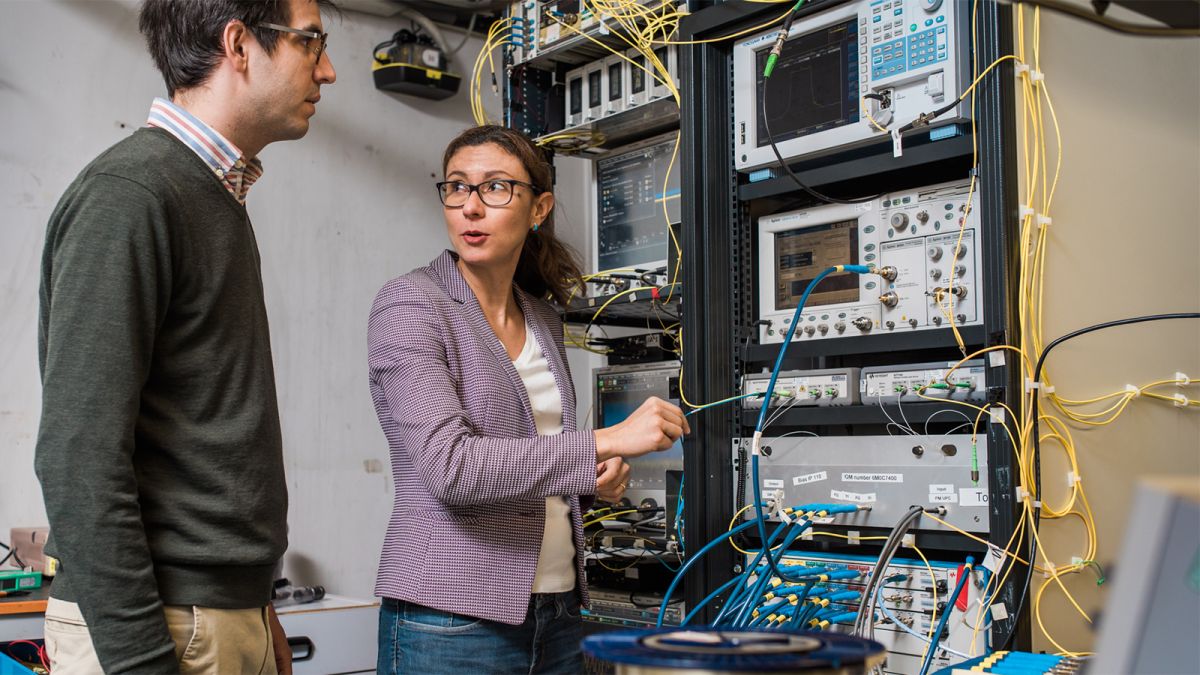Fastest broadband ever unveiled — and it can download all of Netflix in a second
Researchers use new techniques to transfer data equivalent to 222 Ultra HD Blu-rays per second.

A team of London-based researchers have set an astonishing new record for data transfer over fiber-optic cables, giving us a glimpse at what the ultrafast broadband of tomorrow might offer.
The team of scientists from University College London, led by Dr. Lidia Galdino, has published new research in the journal IEEE Photonics Technology Letters that promises to push development of next-gen broadband technology by leaps and bounds. Part of this research was a proof-of-concept data transmission that sets a new record in broadband speeds. The new record doubles that of any currently deployed system, and beats the previous world record held by researchers in Japan, exceeding that record by nearly one fifth.
- The best Wi-Fi routers we've reviewed
- What internet speed do I need?
- The best Netflix VPN will get even more out of your subscription
Team leader Dr. Galdino, in a news release by the University College London, said: “While current state-of-the-art cloud data-centre interconnections are capable of transporting up to 35 terabits a second, we are working with new technologies that utilise more efficiently the existing infrastructure, making better use of optical fibre bandwidth and enabling a world record transmission rate of 178 terabits a second.” That's fast enough to transfer the entire streaming catalog of Netflix in less than a second.
The researchers used a combination of fiber amplification technology and geometrically-shaped signal optimization to move 178.08 terabits per second of data over a distance of 40 km (24.8 miles). The range of amplification techniques and optimizations to improve the signal-to-noise ratio work together to increase the transmission bandwidth, and to improve signal quality overall.
The first piece of this equation is the use of wideband signal enabled by hybrid discrete Raman and rare-earth doped fibre amplifiers. Rare-earth doped fibers incorporate rare-earth elements (such as neodymium, Erbium or holmium) into the glass core of the optical cable, allowing for light amplification over longer distances. These are paired with discrete Raman amplifier technology to boost the power of the signal over the fiber optic lines.
This fiber and amplifier technology is paired with signal optimizations that improve the signal-to-noise ratio using a system-tailored set of geometric shaping constellations -- signal combinations that make the best use of the light passing through the fiber optic cable.
That's a lot of technical terminology to say that the new technique turns the existing fiber optic cable into a wider pipe for data, with amplifiers that pump that data at much higher speeds. The result is the equivalent of 22.25 terabytes per second of broadband speed, which is more than roughly 222 ultra HD Blu-ray discs worth of data. To provide some context for this number, the Google fiber connection that runs between Japan and the West coast of the United States transfers 60 terabits per second, and cost roughly $300 million to build.
Get instant access to breaking news, the hottest reviews, great deals and helpful tips.
The new technology not only promises dramatic increases in bandwidth, it also offers the hope of upgrading existing infrastructure in a cost-effective way. Upgrading a single amplifier on a fiber network using this method could be done for £16,000 GBP ($20,894 USD, according to Google), while laying new optical fiber can cost many times that for a single kilometer.
While the applications are most immediate for large-scale networks, the personal impact could still be enormous, allowing cheaper, faster internet connectivity for everything from Gigabit-speed internet to the home to providing a faster backbone for 5G networks.
Brian Westover is currently Lead Analyst, PCs and Hardware at PCMag. Until recently, however, he was Senior Editor at Tom's Guide, where he led the site's TV coverage for several years, reviewing scores of sets and writing about everything from 8K to HDR to HDMI 2.1. He also put his computing knowledge to good use by reviewing many PCs and Mac devices, and also led our router and home networking coverage. Prior to joining Tom's Guide, he wrote for TopTenReviews and PCMag.

